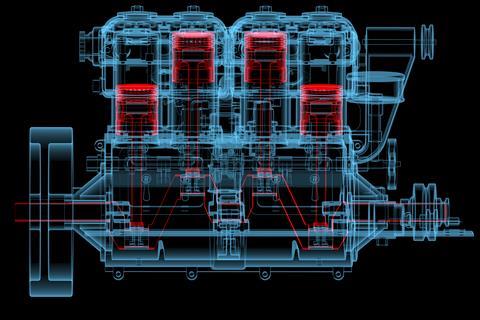Discover Engines for Africa at Our Thorough Automobile Parts Shop
Discover Engines for Africa at Our Thorough Automobile Parts Shop
Blog Article
The Mission for Ultimate Driving Power: Examining the Peak of Engine Performance and Technological Advancements in the Automotive Field
In the world of vehicle design, the search of optimum driving power has been a ruthless pursuit that has actually unfolded through the evolution of engine style and the combination of sophisticated modern technologies. From the precise workmanship of combustion engines to the quick innovations in electric propulsion systems, the automotive field stands at the cusp of a brand-new period identified by unprecedented efficiency capacities.
Advancement of Engine Layout

Moreover, the assimilation of turbocharging and turbo charging technologies has changed engine layout by increasing power without dramatically boosting engine dimension. These forced induction systems compress the consumption air, enabling for even more fuel to be ignited, thus creating better power output from a smaller engine. This advancement has been particularly essential in boosting the performance of smaller sized displacement engines while keeping fuel efficiency criteria.

Performance-Enhancing Fuel Technologies
The execution of sophisticated fuel technologies has dramatically contributed to boosting engine performance in modern lorries. Biofuels, derived from sustainable resources like algae, corn, or sugarcane, offer reduced discharges and boosted engine effectiveness. Additionally, fuel additives and detergents are being created to tidy engine elements, maximize burning, and reduce friction, thus improving total vehicle performance.
Improvements in Electric Propulsion
Significant strides in electrical propulsion innovation have revolutionized the vehicle industry, leading the way for a new age of lasting and efficient transport. Electric lorries (EVs) are getting popularity because of their environmental benefits and advancements in battery modern technology, enabling longer driving ranges and shorter charging times. Producers are investing greatly in r & d to boost the efficiency of electrical propulsion systems, concentrating on enhancing power result, boosting power effectiveness, and reducing general weight.
One notable development in electric propulsion is the development of innovative electric motors that provide greater torque and power thickness, leading to improved velocity and overall driving efficiency. Additionally, regenerative stopping systems have actually been refined to save and record power during slowdown, additional increasing the performance of EVs.
Additionally, the integration of clever modern technologies, such as expert system and anticipating analytics, is maximizing the management of electrical propulsion systems, making sure optimum performance under various driving problems. These developments in electric propulsion are reshaping the vehicle landscape, driving the sector in the direction of an extra lasting and energized future.
Impact of Computational Liquid Characteristics
With advancements in electrical propulsion pressing the borders of vehicle technology, the assimilation of Computational Fluid Dynamics is playing an essential duty in enhancing aerodynamic performance and enhancing general efficiency in car layout. Computational Liquid Characteristics (CFD) entails the use of computer system simulations to evaluate the circulation of air around find a vehicle, allowing designers to forecast just how layout adjustments will certainly affect the rules of aerodynamics without the requirement for expensive physical prototypes. By properly modeling air flow patterns, CFD allows for the improvement of automobile shapes to minimize drag, improve cooling, and improve security.
CFD enables engineers to maximize air movement around parts such as radiators, engine bays, and wheel wells, adding to improved efficiency and total driving experience. In final thought, the combination of Computational Fluid Characteristics represents a substantial action onward in the pursuit for utmost driving power and efficiency in the vehicle industry.
Future Fads in Engine Advancement
In the vibrant landscape of automobile engineering, advanced developments are shaping the future trajectory of engine development. The future of engine design is noted by a solid emphasis on sustainability, efficiency, and performance. Manufacturers are significantly focusing on establishing engines that not just provide high power outcomes yet likewise focus on ecological responsibility by improving and lowering exhausts gas effectiveness.
One popular fad in engine development is the increase of electrification. Hybrid and electrical powertrains are obtaining grip as viable alternatives to typical burning engines. These technologies offer the capacity for considerable decreases in carbon exhausts and increased power performance, straightening with international initiatives to combat climate modification.
Additionally, developments in products science and manufacturing strategies are enabling the production of lighter and extra sturdy engine elements. This shift in the look at these guys direction of lightweight products such as carbon fiber and aluminum alloys adds to enhanced performance and fuel economic climate.
Final Thought
Finally, the search of ultimate driving power in the vehicle market proceeds to drive advancements in engine style, fuel modern technologies, electric propulsion, and computational liquid dynamics. The evolution of these modern technologies is shaping the future of engine development, leading the way for extra reliable and powerful cars (engines for africa). As the market proceeds to push the boundaries of what is possible, we can anticipate to see a lot more cutting-edge growths in the quest for peak performance
One of the essential milestones in engine design advancement is the change from standard carbureted engines to modern fuel-injected systems. By exactly metering the gas distribution to each cyndrical tube, fuel-injected engines maximize burning, resulting in better additional reading performance and minimized environmental influence.
Moreover, the assimilation of turbocharging and turbo charging innovations has actually reinvented engine layout by enhancing power without dramatically increasing engine dimension (engines for africa).The implementation of advanced fuel technologies has dramatically contributed to boosting engine performance in contemporary vehicles. Furthermore, gas additives and cleaning agents are being developed to clean engine components, maximize burning, and decrease rubbing, thereby increasing total vehicle performance
Report this page